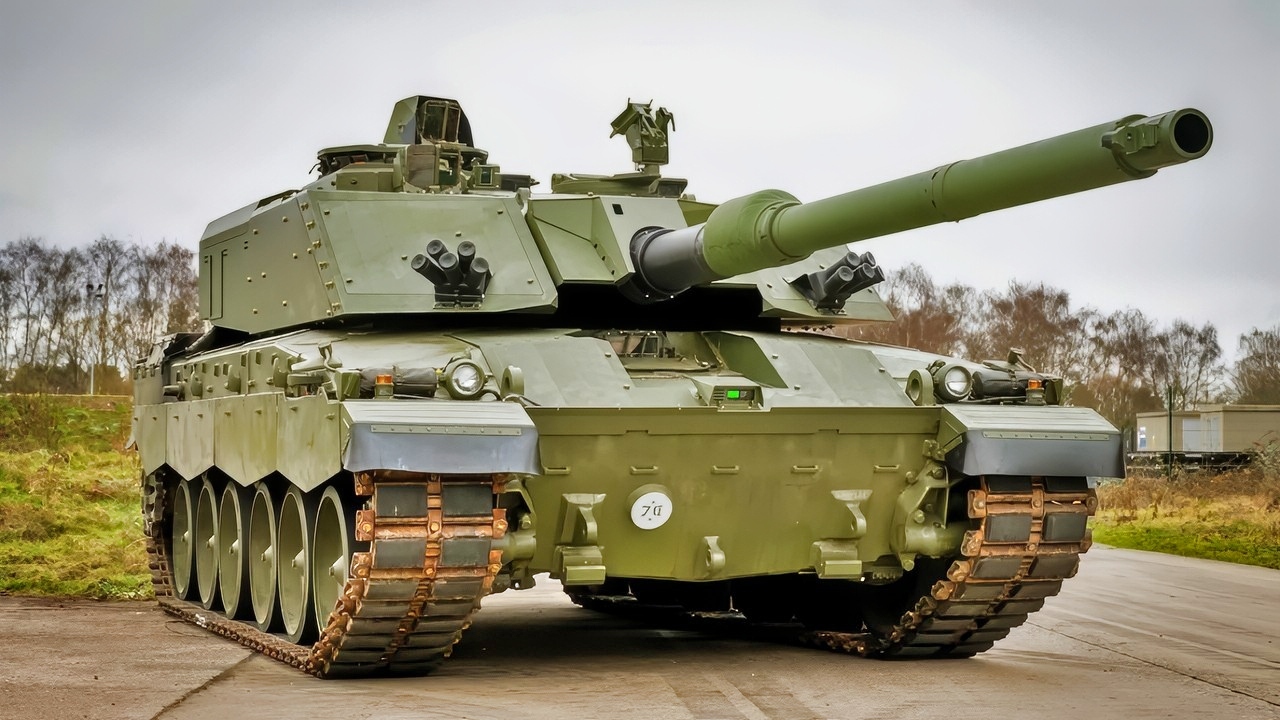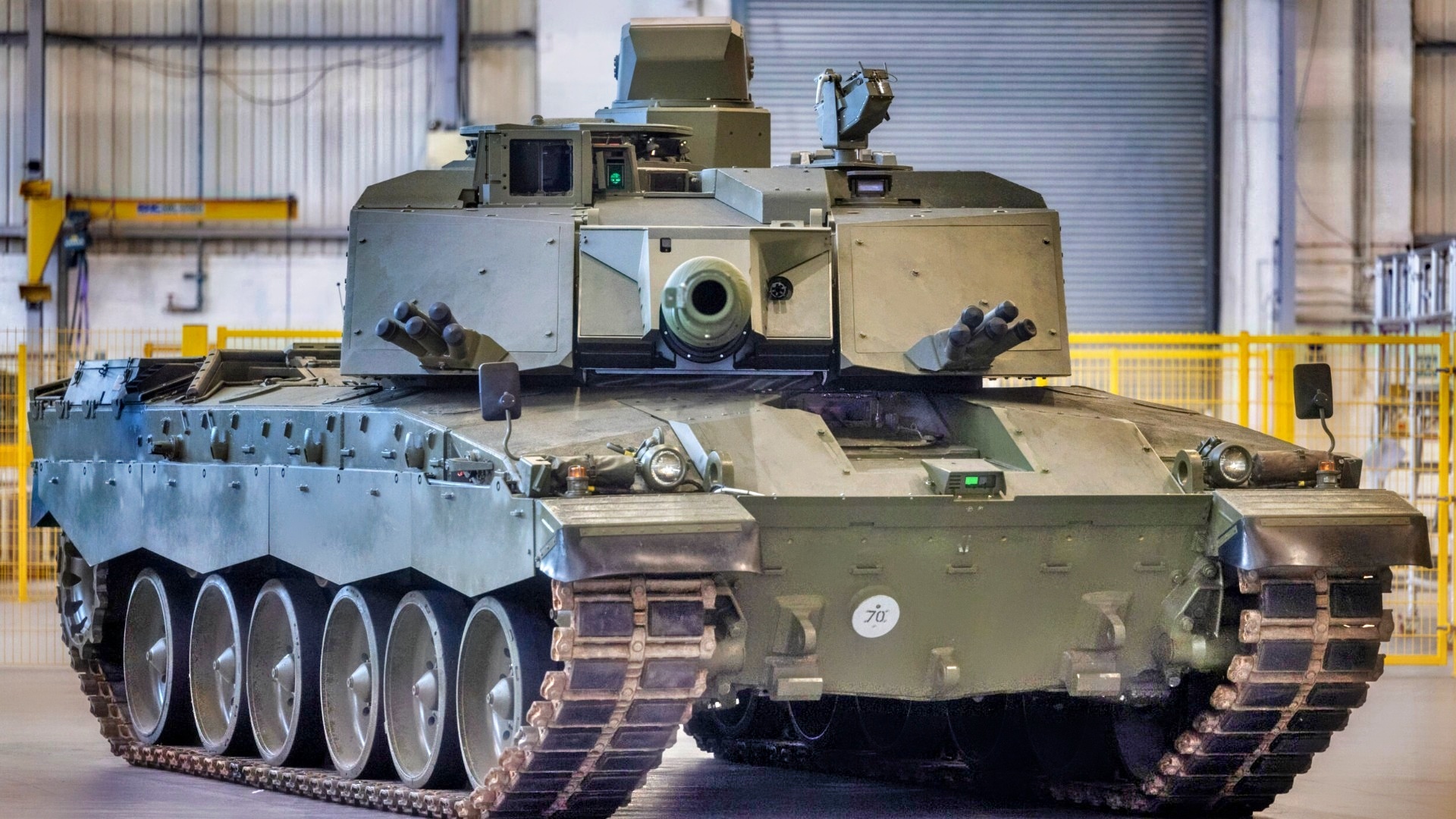Key Points – Britain’s Challenger 3 will finally drag the Army’s tank fleet into the modern era with a new 120mm gun, upgraded armor and active protection—all bolted onto refurbished Challenger 2 hulls.
-On paper, it may be the most capable British tank ever fielded.

Challenger 3 Tank British Army Image.

Challenger 3 Tank Image from British Army.
-The problem is scale.
-London plans to operate just 148 Challenger 3s at a time when a credible armored division typically fields 170–300 tanks, plus heavy artillery the UK currently lacks.
-RUSI warns that even an excellent tank, bought in token numbers and thinly supported, cannot offset the sheer mass and fires Russia can bring.
Challenger 3 May Be Lethal – But 148 Tanks Won’t Scare Russia
The British Army’s upcoming Challenger 3 main battle tank looks a lot like the older Challenger 2, and that is by design. Rather than building a new main battle tank from the ground up, the Challenger 3 instead mates a new turret to the Challenger 2 hull, a decision made seemingly as a cost consideration.
Former British Defense Minister Ben Wallace outlined the plan for Challenger 3 production in 2021. The tank’s new 120-mm rifled main gun would finally bring British main battle tanks in line with those of other NATO members and thus improve interoperability between the British and their allies. New passive protection and the addition of active protection would, in theory, give the Challenger 3 a significant boost in armor over the Challenger 2, despite the tanks’ similarities.

Challenger 3 Tank. Image Credit: Creative Commons.

The Challenger 3 Main Battle tank. The latest edition to the Armoured family of the British Army. Displayed during PROJECT HERMOD 2
The tank remains the most effective way of destroying enemy armour. It is at the heart of high intensity warfighting and therefore a vital part of an integrated defence system.
The British Army is announcing a huge upgrade programme which will result in the creation of the Challenger 3 Main Battle Tank.
Challenger 3 will be the most lethal tank in NATO. The rifled barrel of Challenger 2 will be replaced by a 120mm smoothbore gun, making use of the most advanced ammunition available globally.
PROJECT HERMOD 2 is an event run for members of the intelligence and security committee and the House of Commons defence committee. It will showcase the Army Special Operations (rangers), UK stratcom, innovation, and digitisation.
Both the original Challenger and the Challenger 2 relied on a rifled 120-mm main gun that could fire high-explosive squash head, or HESH, ammunition. While HESH-type ammo was originally intended to enable tanks to use the same projectile for anti-armor and anti-fortification roles, modern armor largely negates HESH’s advantages against armored vehicles.
External analyses point to a problem that risks hobbling the British Army’s MBT fleet and undermining its effectiveness. The issue is simple: The shockingly modest number of Challenger 3 tanks the Army plans to acquire.
The Royal United Services Institute, the United Kingdom’s oldest defense-focused think tank, dove into the Challenger 3 controversy with a paper that looked at the present state and future projections of the British military’s force and force posture.
Their conclusions were not kind:
“Similarly, when RUSI analysts last looked at the Army, and the combat division the UK claims to have, it measured the number of main battle tanks and self-propelled artillery in the UK’s inventory and found the numbers wanting when set against a ‘credible’ armoured division of anywhere from 170 to over 300 tanks and around 110 to 220 artillery pieces,” RUSI explained.
The RUSI report added that these “numbers have not improved in the subsequent four years: under the Challenger 3 programme the UK will have a total of 148 main battle tanks (in 2030).
“Meanwhile, the UK has essentially removed the AS90 artillery from service by donating 32 to Ukraine, replacing them with 14 Archer guns until such time as the ‘Mobile Fires Platform’ is procured (some time ‘this decade’).”
But the most scathing part of the analysis comes later.
“The Challenger 3 may be the ‘most lethal tank’ ever fielded by the British Army, but it is going to be available in such limited numbers that it will have to perform heroically in the face of a notional foe in the form of Russian ground forces, such as a Combined Arms Army.”
Show Me the Numbers
The British Army’s diminutive number of MBTs is shocking when examined within the context of the NATO alliance. The M1 Abrams main battle tank, one of the most numerous within NATO, is in service with Poland, Ukraine, Australia, and several other countries. The U.S. Army alone has 4,600 M1 Abrams in service.
The German Bundeswehr’s Leopard 2 is another main battle tank in service with several NATO members and other militaries around the globe. Berlin counts around 320 Leopard 2s in service.
Challenger 3 Tank Looks Like a Challenge
A tabulation of numbers alone would make for a superficial analysis.
RUSI points out that “solutions are available, but they will require hard thinking and prioritisation. In some cases, increased firepower will be desirable.
But it may be that the UK should be investing in sustainment and enablers like bridging equipment before purchasing a single additional tank or jet that it can’t, in any case, deploy and support.
“Technology should play a key role—for example, learning the lessons about where drones can complement artillery and provide effective local surveillance. But it will take novel thinking and the development of doctrine and tactics, allied to new training, to achieve increased combat output—and effect—with forces that appear unlikely to increase in terms of personnel.”
Simply acquiring more Challenger 3 main battle tanks would be only a partial solution.
While the new MBT’s biggest shortcoming, it seems, is low acquisition numbers, supporting that small fleet would be a necessary first step to growing out the British Army’s armored capabilities, and an important step to take before purchasing more tanks.
About the Author: Caleb Larson
Caleb Larson is an American multiformat journalist based in Berlin, Germany. His work covers the intersection of conflict and society, focusing on American foreign policy and European security. He has reported from Germany, Russia, and the United States. Most recently, he covered the war in Ukraine, reporting extensively on the war’s shifting battle lines from Donbas and writing on the war’s civilian and humanitarian toll. Previously, he worked as a Defense Reporter for POLITICO Europe. You can follow his latest work on X.
More Military
The U.S. Military Is In ‘Crisis’
Canada’s F-35 Stealth Fighter Mistake Is Just Around the Corner
The Mach 2.23 F-4G Wild Weasel Has a Message for the U.S. Air Force
The U.S. Army’s XM30 Crisis Looks Unavoidable Now
